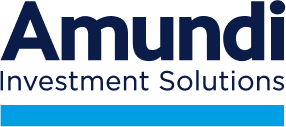The Portfolio Management System: An Asset Manager’s Best Ally
Asset management has always been about analyzing complex market dynamics and managing risk. However, over the past few years, several key developments have reshaped how asset managers approach their core activities. At Amundi, Anne Gruz, Strategic Product Manager Risk and Sustainability, and Arnaud Dreyfus, Strategic Product Manager Front Office and Trading, are at the forefront of this evolution.
“Risk comes from not knowing what you are doing,[1]” according to legendary investor Warren Buffett. The quote underscores the value of being well-informed and making decisions based on thorough research and analysis. Effective risk management involves identifying, assessing, and mitigating potential risks. From the advent of Big Data to climate change, increased regulation, and an acceleration in extreme scenarios and interconnected events (as evidenced by the Covid-19 pandemic or the 2022 Energy Crisis), asset managers must now navigate a fast-changing and complex landscape: staying ahead of evolving methodologies in portfolio analysis and risk management is therefore not merely advantageous – it is imperative for optimized and sustainable trading returns.
Managing risks in a rapidly evolving market...
In the current financial and economic environment, risks can rapidly materialize. “Market risk arises from changing conditions that directly impact portfolio valuations and can stem from various risk factors,” explains Anne Gruz. Credit risk emerges when holding bonds or when exposed to market counterparties through Derivatives. Liquidity risk affects the ability to rapidly execute large-volume transactions; during volatile periods, unwinding positions becomes significantly more challenging – a critical consideration for portfolio management. Climate Physical risks refer to the direct impact of climate change on financial assets. Acute and chronic physical risks can damage infrastructure, supply chains, and productivity, leading to significant financial losses. Transition risks refer to the financial risks associated with the shift towards a low-carbon economy. These climate risks materialize via additional market and credit risk. With regulatory pressure intensifying, asset managers should be equipped with comprehensive climate scenario analysis. Finally, says Anne, “operational risk presents another concern, manifesting through data entry errors, ‘fat finger’ mistakes, or system failures, all of which can significantly impact portfolio performance.”
In an environment where inadequate risk management can cost a single institution millions of euros in fines – not to mention portfolio losses – Anne Gruz emphasizes the importance of proactive measures: “Given the dynamic nature of financial markets, risks need to be continuously anticipated and controlled. This means having systems and solutions that encompass all aspects of risk management, including automated controls and limits to ensure investments remain compliant at any point in time.” Investment Management platforms, therefore, need to be multi-faceted, addressing each point with appropriate tools to secure portfolio management and optimize risk-return ratios by accounting for various risk types.
… And optimizing performance with effective solutions
It is, therefore, essential that a platform offers the tracking and monitoring of various indicators within a single tool: this is where the pivotal connection between portfolio analysis and trading lies. Such an integrated solution empowers managers to make informed decisions and maintain appropriate control over their portfolios and investments. "At Amundi, we believe having one unified system, where all indicators are centralized, is crucial for effective monitoring and trading decisions," points out Arnaud Dreyfus. "This integrated approach is precisely what our Alto platform delivers."
In addition to providing a holistic view of risks, the platform offers simulation in terms of market data and new transactions. These feature help asset managers see and anticipate how their portfolios react to various market conditions ad adjustments, enabling informed decisions. “Models based on scenario analysis and stress tests will allow managers to simulate shocked market conditions and assess the resilience of the portfolio when these scenarios are applied,” says Anne. “Additionally, the Alto platform offers a simulation mode on existing positions as well as potential future positions, all before orders are executed. Asset managers and traders have a variety of indicators and models at their fingertips, recomputed in real-time and all directly integrated into the platform.” This enhances the ability to manage and optimize portfolios effectively.
Portfolio optimization solutions are another powerful tool for both asset management and trading strategies. According to Arnaud Dreyfus, “our clients have access to optimization tools that can be applied to new investments, existing positions, and divestments. These tools help minimize transaction costs and reduce the impact of financial transactions on the portfolio. They also enable portfolio realignment and adjustments against a specific benchmark, ensuring greater precision and efficiency.”
Finally, these tools allow effective risk monitoring and diversification, especially in case of crisis. “In some cases, scenario analysis makes it possible to foresee market fluctuations,” reveals Anne Gruz. “In anticipation of a crisis, managers might reduce exposure to a particular sector, for example, or diversify as much as possible. Some tools enable participants to react more quickly when a crisis occurs. The Alto integrated trading platform, for instance, incorporates liquidity monitoring tools, allowing to plan before crises occur.”
New technologies provide crucial support
Building on enhanced flexibility and improved responsiveness, new technologies are providing crucial support to asset managers and traders. Data sits squarely at the intersection of portfolio analysis and trading, unlocking a host of new possibilities. “Data as a Service (DaaS), machine learning, predictive analysis, real-time monitoring… At Amundi Technology, our lab is exploring several new avenues,” states Arnaud. “Our goal is to provide real-time decision-making support and feedback to enhance execution and operational management. We are also working on integrating risk analysis more deeply into the platform to ensure maximum responsiveness – whether to market conditions or new transactions.”
Finally, solutions enabling a seamless interface between different systems are essential: “At Amundi, we have developed SaaS solutions, APIs between our different components so that they can be interoperable, like building blocks,” explains Anne. “They provide entry points that allow our clients to use their own algorithms. For instance, a proprietary optimization system can be connected directly to the Alto platform to work on portfolio management, via quantitative teams who have direct control over risk calculation.”
Today’s advanced tools offer asset managers unparalleled insights, enabling them to navigate markets volatility with precision. “Our solutions are designed to help asset managers save time and focus on their core business,” says Arnaud. “By harnessing these innovations, firms can optimize decision-making, mitigate risk exposure, and enhance long-term performance.” Beyond portfolio analysis and trading, the real synergy lies in leveraging technology to strengthen expertise – providing a decisive edge in today’s rapidly evolving markets.
[1]https://duncangrp.com/quotes-from-warren-buffett-charles-munger/





